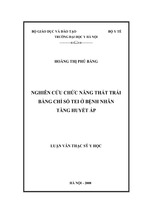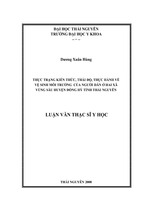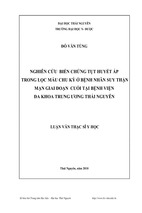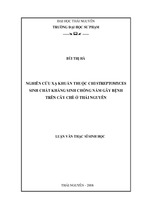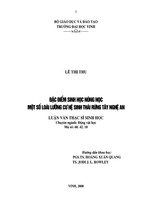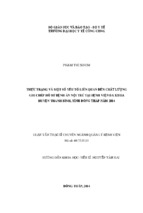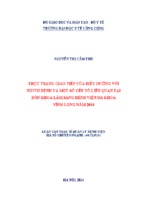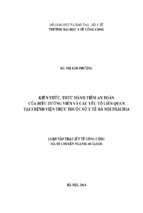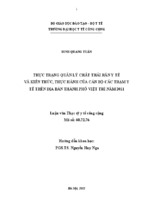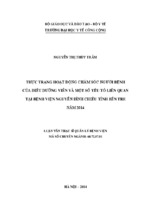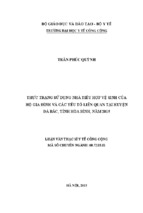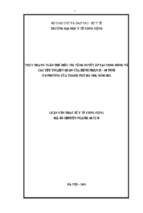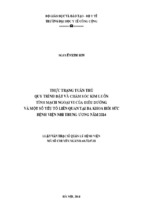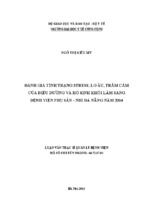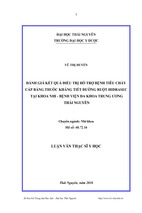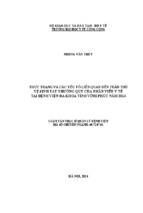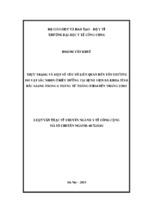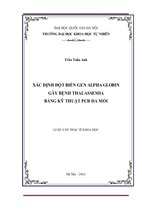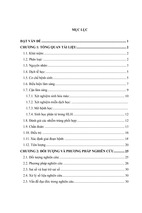STUDY ON EFFECTS OF FLOWABILITY
ON STEEL FIBER DISTRIBUTION PATTERNS
AND MECHANICAL PROPERTIES OF SFRC
A thesis submitted in fulfilment of the requirements for the degree of
Master of Engineering
MINGLEI ZHAO
Master of Engineering
School of Civil Environmental and Chemical Engineering
College of Science Engineering and Health
RMIT University
August 2016
I
Declaration
I certify that except where due acknowledgement has been made, the work is that of the
author alone; the work has not been submitted previously, in whole or in part, to qualify for any
other academic award; the content of the thesis is the result of work which has been carried
out since the official commencement date of the approved research program; any editorial
work, paid or unpaid, carried out by a third party is acknowledged; and, ethics procedures and
guidelines have been followed.
MINGLEI ZHAO
12/08/2016
II
ABSTRACT
Steel fiber reinforced concrete (SFRC) is a multiple-composite material
developed during the early 1970s. In SFRC, short steel fibers are randomly distributed
in concrete. Steel fibers can prevent the development of micro-cracks inside the
concrete and reduce the expansion and development of the macro-cracks, thus
enhance mechanical performance of SFRC. However, there is lack of studies on the
influence of flowability of fresh SFRC on the steel fiber distribution patterns and
mechanical properties of hardened SFRC.
In this research, steel fibers made by the thin-plate shearing method are used.
Standard specimens are cast in which steel fibers are added to the concrete mix. The
slumps ranging from 80 mm to 200 mm are employed as the parameter to reflect the
flowability of SFRC. The main research work is as follows:
(1) By cutting the specimens in three directions (transverse, horizontal and
vertical sections) and quantizing the steel fibers in each section, effects of
flowability on steel fiber distribution patterns are assessed. Distribution rate,
distribution coefficient and orientation coefficient are the three factors used
for describing steel fiber distribution patterns in this research. Calculated
results of these factors of different flowability SFRC are summarized and
compared.
(2) Basic mechanical properties tests including compressive strength, splitting
tensile strength and flexural strength tests are conducted for different
flowability SFRC. The splitting tensile tests along three directions of
specimens of SFRC are carried out in view of the different orientation of steel
III
fibers in these directions. Load-deflection curve of flexural toughness test is
plotted and analyzed.
(3) Two commonly used methods, i.e., ASTM C1018 (Standard Test Methods for
Flexural Toughness and First Crack Strength of Fiber Reinforced Concrete)
method and the Chinese Standard JG/T472-2015 (Steel Fiber Reinforced
Concrete), are used to access flexural toughness of SFRC. Fracture energy is
also calculated.
(4) Formulas for calculating moment of inertia and flexural stress of flowable
SFRC are proposed.
The results show that an increase of flowability has no influence on the
orientation of steel fibers and leads to a decrease of sectional uniformity. Steel fibers
orientated in a longitudinal direction of higher flowability SFRC tend to precipitate
towards the bottom layer of the specimens. This resulted in much better flexural
performance including flexural toughness and fracture energy. This would indicate
that, instead of studying the entire cross section, the distribution rate and distribution
coefficient of steel fibers in tensile zone of specimen should be considered as the main
factor determining flexural performance of SFRC. Calculations for bending stiffness
and flexural stress based on the distribution rate of high flowability SFRC are
recommended.
Moreover, due to the layering effect of steel fibers, traditional test methods are
not suitable for determining basic mechanical properties such as compressive strength,
splitting tensile strength and flexural strength of SFRC, which require further
investigations.
IV
Key words: steel fiber reinforced concrete (SFRC); orientation of steel fiber;
flowability of fresh SFRC; compressive strength; splitting tensile strength; flexural
strength; flexural toughness; fracture energy.
V
ACKNOWLEDGEMENTS
First and foremost, I would like to take this opportunity to express my profound
sense of gratitude and indebtedness to my perspicacious supervisors, Dr. Jie Li and Dr.
David Law, for their enthusiastic and expert guidance, continuous help,
encouragement, assistance, rationally-based advice and suggestions as well as the
critical comments throughout the research study.
I would also like to acknowledge the University Library of RMIT for their online
data base which allowed me to access all the data required in this investigation.
Without such service, the completion of this research would have been impossible.
I would like to thank my fellow post-graduate students and friends, Dr. Xinxin
Ding, Dr. Mingshuang Zhao and Ms. Leiyuan Yan for their support and contribution
to this research.
Last but not least, I wish to express my deepest gratitude to my father, Mr.
Shunbo Zhao and mother, Mrs. Fenglan Li, for their financial support, wishes,
blessings and love. Also I am grateful to my girlfriend, Ms. Zhen Yang for her
encouragement and understanding.
VI
Table of Content
ABSTRACT ......................................................................................................... III
ACKNOWLEDGEMENTS .................................................................................VI
LIST OF FIGURES .............................................................................................. X
LIST OF TABLES ............................................................................................. XII
NOTATION ....................................................................................................... XIII
CHAPTER 1 INTRODUCTION ........................................................................... 1
1.1 General .................................................................................................. 1
1.2 Research Objectives .............................................................................. 5
1.3 Thesis Arrangement ............................................................................... 6
CHAPTER 2 LITERATURE REVIEW................................................................. 9
2.1 General ..................................................................................................... 9
2.2 Factors Influencing Steel Fiber Distribution Patterns ............................ 10
2.2.1 Matrix of Concrete ...................................................................... 10
2.2.2 Characteristics of Steel Fiber ...................................................... 10
2.2.3 Volume Fraction of Steel Fiber ................................................... 11
2.2.4 Workability of Fresh Concrete .................................................... 11
2.2.5 Casting Approach ........................................................................ 12
2.2.6 Boundary Condition .................................................................... 13
2.3 Description of Steel Fiber Distribution in SFRC ................................... 13
2.3.1 Distribution Rate/concentration of Steel Fiber ........................... 13
2.3.2 Distribution Coefficient/uniformly Distributed Variable of Steel
Fiber ............................................................................................................. 14
2.3.3 Orientation Coefficient of Steel Fiber ......................................... 14
2.4 Relationship between Steel Fiber Distribution Patterns and Mechanical
Properties of SFRC .............................................................................................. 15
2.4.1 Distribution Rate/Concentration of Steel Fiber .......................... 16
2.4.2 Distribution Coefficient /Uniformly Distributed Variable of Steel
Fiber ............................................................................................................. 17
VII
2.4.3 Orientation Coefficient of Steel Fiber ......................................... 18
2.5 Issues Remaining of Flowable SFRC .................................................... 18
2.6 Research Questions and Assumptions ................................................... 19
2.6.1 Research Questions ..................................................................... 19
2.6.2 Assumptions ................................................................................ 20
2.7 Conclusion ............................................................................................. 22
CHAPTER 3 EXPERIMENTAL DESIGN ......................................................... 23
3.1 General ................................................................................................... 23
3.2 Raw Material Tests................................................................................. 23
3.3 Mix Design............................................................................................. 25
3.4 Specimens Preparation ........................................................................... 26
3.5 Curing of Specimens .............................................................................. 28
3.6 Cutting Specimens for Steel Fiber Distribution Patterns Analysis ........ 29
3.7 Mechanical Properties Tests................................................................... 31
3.7.1 Compressive Strength Test.......................................................... 31
3.7.2 Splitting Tensile Strength Test .................................................... 31
3.7.3 Flexural Strength Test ................................................................. 32
CHAPTER 4 EVALUATION OF STEEL FIBER DISTRIBUTION PATTERNS
...................................................................................................................................... 33
4.1 General ................................................................................................... 33
4.2 Distribution and Orientation of Steel Fibers .......................................... 33
4.3 Conclusion ............................................................................................. 42
CHAPTER 5 MECHANICAL PROPERTIES OF SFRC AND THEIR
CORRELATION WITH STEEL FIBER DISTRIBUTION PATTERNS .................... 43
5.1 General ................................................................................................... 43
5.2 Strength of SFRC ................................................................................... 43
5.3 Evaluation of Flexural Performance of SFRC ....................................... 46
5.3.1 Accessing Flexural Toughness through ASTM C1018 Standard 46
5.3.2 Accessing Flexural Toughness by using JG/T 472-2015 Standard
...................................................................................................................... 49
VIII
5.3.3 Fracture Energy (Ge,p) ................................................................. 53
5.4 Analysis on Pre-peak-load Performance of SFRC ................................. 53
5.4.1 Change in Bending Stiffness (B) ................................................ 53
5.4.2 Change in Modulus of Elasticity (E) of SFRC ........................... 54
5.4.3 Change in Moment of Inertia (I0)................................................ 58
5. 5 Post-peak-load Performance ................................................................. 59
5.6 Conclusion ............................................................................................. 60
CHAPTER 6 CONCLUSION AND RECOMMENDATION ............................. 62
6.1 Conclusion ............................................................................................. 62
6.2 Recommendations for Future Studies .................................................... 64
REFERENCE ....................................................................................................... 65
IX
LIST OF FIGURES
Figure
Title
Page
1-1
Steel Fiber: Cold-Drawn Wire with Hooked Ends
3
1-2
Steel fiber: Cut Sheet Type with Enlarged Ends (left) or Indentations (right)
4
1-3
Steel Fiber: Milling Type with Deformed Shape
4
2-1
Simulation of Steel Fiber Distribution Patterns of Different Flowability 20
SFRC Discussed in Scenario 1
2-2
Simulation of Steel Fiber Distribution Patterns of Different Flowability 21
SFRC Discussed in Scenario 2
3-1
Sample of Fiber Used
24
3-2
Machine Used for Blending
27
3-3
Slump Tests of Fresh Concrete Mixture
27
3-4
Vibration of Specimens
28
3-5
Curing of Specimens
29
3-6
Simulation of Cutting Orientation of The Specimens
30
3-7
Gridding of Section Using AutoCAD
30
3-8
Photos of Cut Specimens
30
3-9
Compressive Strength Test
31
3-10
Loading on Specimens for Splitting Tensile Strength
32
3-11
Flexural Strength Test
32
4-1
Distribution Rate of Steel Fibers Versus Layers of Specimens of Different 34
Flowability SFRC
4-2
Transverse Section of Different Flowability SFRC
36
4-3
Vertical Section of Different Flowability SFRC
38
4-4
Horizontal Section of Different Flowability SFRC
40
5-1
Simulation of Cross Section of Splitting Tensile Strength Test
46
X
5-2
Definition of Toughness Indexes According To ASTM C 1018 Method
48
5-3
Definition of Toughness Indexes According to JG/T 472-2015 Method
51
5-4
Load-deflection Curve of Different flowability SFRC
52
5-5
Simulation of SFRC Stiffness
56
5-6
Crack Elongation and Expansion Mechanism of SFRC
60
XI
LIST OF TABLES
Table
Title
Page
3-1
Physical and Mechanical Properties Of Cement
24
3-2
Physical Properties of Sand
24
3-3
Physical Properties of Coarse Aggregate
24
3-4
Combination of Test Parameters
25
3-5
Mix Proportions
26
3-6
Dimensions of Specimens
28
4-1
Distribution Coefficient of SFRC
41
4-2
Orientation Coefficient of SFRC
41
5-1
Mechanical Properties of SFRC
44
5-2
Flexural Toughness Calculated by ASTM C 1018
48
5-3
Summary of Calculated𝑓e,p , 𝑅e,p , 𝑓e,k and 𝑅e,k
51
5-4
Fracture Energy
53
5-5
Data of Flexural Resistance of SFRC
58
XII
NOTATION
𝑚sf0
the mass of steel fibers used per cubic meter (kg/m3),
𝑚c0
the mass of cement used per cubic meter (kg/m3),
𝑚f0
the mass of fly ash used per cubic meter (kg/m3),
𝑚w0
the mass of water used per cubic meter (kg/m3),
𝑚s0
the mass of sand used per cubic meter (kg/m3),
𝑚g0
the mass of coarse aggregate used per cubic meter (kg/m3),
𝜌c
the density of cement (kg/m3),
𝜌f
the density of fly ash (kg/m3),
𝜌w
the density of water (kg/m3),
𝜌s
the density of sand (kg/m3),
𝜌g
the density of coarse aggregate (kg/m3),
𝛽s0
the sand ratio,
𝜌sf
the volume fraction of the steel fiber,
𝛼
the percentage of air within the concrete.
ρf
the volume fraction of steel fiber
ni
the number of steel fibers in ith region of the section
Ai
the area of ith region
Af1
the sectional area of single steel fiber across the section
m
the number of regions of the section
the average of number of steel fibers in m regions
x
he distribution rate of steel fibers across section x
y
the distribution rate of steel fibers across section y
𝑓e,p
the equivalent initial flexural strength (MPa)
𝑏
the cross section width of the beam (mm)
XIII
ℎ
the cross section height of the beam (mm)
𝐿
the span of the beam (mm)
𝛿p
the mid-span deflection of the beam under peak-load (mm)
𝛺p
the area under the load-deflection curve up to 𝛿p (Nmm)
𝑓ftm
the flexural strength of SFRC (MPa)
𝑃
the maximum flexural load (kN)
𝛺p
the area under the load-deflection curve from 𝛿p up to 𝛿k (Nmm)
𝛿p,k
the increased mid-span deflection from 𝛿p to 𝛿k (mm)
𝛿k
the calculated mid-span deflection 𝐿/𝑘 (mm) when k equals to 500, 300,
250, 200, 150
𝐸
the modulus of elasticity
𝐼
the moment of inertia
𝐸𝑖
refer the modulus of elasticity of the mixture constituents
𝑉𝑖
the volume fraction of the mixture constituents
𝐸j
the modulus of elasticity of layer j
𝐸C
the modulus of elasticity of concrete
𝐸S
the modulus of elasticity of steel fiber
𝜌j
the distribution rate of layer j‟s steel fibers
𝛼j
the ratio of the modulus of elasticity of layer j to the modulus of elasticity of
concrete
𝐴j
the additional sectional area of layer j
𝑏
the width of section
ℎ
the height of the section
𝐴0
the aspect sectional area
𝐴1
the additional sectional area by modulus of elasticity of layer 1
𝐴2
the additional sectional area by modulus of elasticity of layer 2
𝐴3
the additional sectional area by modulus of elasticity of layer 3
XIV
𝐴4
the additional sectional area by modulus of elasticity of layer 4
𝑦0
the aspect neutral axis
𝐼0
the altered moment of inertia before crack-elongation
𝑊0
the moment of elastic resistance of aspect section area 𝐴0 to the edge of
tensile section
𝑀𝑐𝑟
the bending moment
𝛼e
the ratio of the modulus of elasticity of steel fiber to the modulus of elasticity
of concrete.
XV
CHAPTER 1 INTRODUCTION
1.1 General
Concrete is a composite of crushed stone or gravel, sand, or other coarse and fine
aggregates, bound together by means of the hydration of cement or other cementitious
materials. It is an important and major construction material used for building
structures, hydraulic structures, harbor engineering, bridges, roads and any other
infrastructures, and is the major building material used in modern civil engineering.
Generally, concrete has many good properties in compressive strength, volume steady,
durability, and fire resistance, accompanied with better forming ability, easily made of
local resources and cheaper construction. However, it has some disadvantages such as
high self-weight, long curing period to get the strength required, and easily cracked.
During the development progress over the past years, concrete has experienced
several great leaps.
Steel fiber reinforced concrete (SFRC) is a multiple-composite material
developed during the early 1970s, in which short steel fibers are randomly oriented in
concrete [1, 2]. The original purpose of SFRC was to improve the lower tensile
strength and poor compressive ductility by using the restraining effect of steel fibers
to stop the development of micro-cracks inside the concrete and reduce the expansion
and development of the macro-cracks. With the increase of tensile strength, the
properties controlled by the main tensile stress such as shear strength, flexural
strength, and cracking resistance could be increased. Therefore, the performances of
SFRC structures could be improved under shear, flexural, punching and impact loads,
as well as under fatigue and recycled or other complex actions.
1
Now it is known that steel fibers in concrete have many benefits to improve the
mechanical properties and durability of concrete. With proper mix proportion and
production methods, SFRC has not only improved conventional properties such as
compressive strength, modulus of elasticity, fracture resistance, shear resistance,
tensile strength and flexural strength [2-9], but also remarkably enhanced some other
properties. For example, the energy absorption, toughness, peak-strain, and residual
tensile strain post peak-stress under compression could be increased with the amount
of steel fibers, especially for high-strength concrete [4-7]; the multiple cracking and
strain hardening of SFRC could be achieved before complete failure under uniaxial
tension or multi-axial loads, where the nonlinear fracture of the concrete matrix, the
bond-slip behavior between fibers and concrete matrix and the elastic response of
both materials are taking place [8, 9]; the flexural toughness and residual tensile strain
post peak-stress [5, 10-12], and the fracture energy and post-cracking resistance [12]
could be increased, as the steel fibers bridged the cracks and restrained crack
developments; the moisture diffusion could be reduced inner concrete and the drying
shrinkage of SFRC in composition with steel fibers could be reduced [13]; assisted
with polypropylene fibers, the residual mechanical properties and the resistance to
high temperature of SFRC could be improved [14].
As mini-reinforcement distributed randomly in concrete, steel fiber is the key
material of SFRC. In accordance with the specification of ACI A820 [16], four
general types of steel fibers are identified based upon the products used as a source of
the steel fiber material. They are cold drawn wire (type I), cut sheet (type II),
melt-extracted (type III) and other fibers (type IV). Fibers may be straight or
deformed. The tensile strength of steel fibers is higher than 345 MPa. The dimension
and permissible variation of steel fibers presented by equivalent diameter and length,
and the mechanical properties of steel fibers are also specified. Standard test method
for tensile strength and Young‟s modulus of fibers is specified in ASTM C 1517-03
(Standard Test Method for Tensile Strength and Young‟s Modulus of Fibers) [17]. The
most basic type of steel fibers is straight fibers cut out of smooth wire. Such fibers do
2
not ensure a full utilization of the strength of source steel, as they are lack of
appropriate anchorage in concrete matrix. With the development of research and
engineering application, advances of steel fibers have been achieved in production
technology and composition steel. Over 90 % of currently produced fibers are
deformed shapes adjusted to maximize the anchorage of fibers in concrete. Flattened,
spaded, coned, twisted, crimped, hooked, surface-textured steel fibers have been
produced. These steel fibers have circular, square, rectangular or irregular
cross-section. Each of the types can additionally vary in diameters and length. The
steel fibers usually used in engineering are as shown in Figs. 1-1 to 1-3. They are
cold-drawn wire with hooked ends, cut sheet with enlarged ends or indentations and
milling type with deformed shape. The section of cold drawn wire is circular, others
are rectangular or irregular. The hooked ends, enlarged ends and deformed shape are
made to enhance the bound effects of steel fibers to concrete, however different shape
has different enhancement effect. With the application of steel fiber in high-strength
concrete, it is found that the tensile strength of steel fiber should be matched with the
strength of concrete, hence the steel fibers should be produced with different strength
grade [9, 10].
Fig. 1-1 Steel Fiber: Cold-Drawn Wire with Hooked Ends
3
Fig. 1-2 Steel fiber: Cut Sheet Type with Enlarged Ends (left) or Indentations (right)
Fig. 1-3 Steel Fiber: Milling Type with Deformed Shape
Based on the literature review [19], the orientation of steel fibers in concrete
matrix is affected by many factors. These factors include matrix of concrete,
characteristics of steel fiber, volume fraction of steel fiber, workability of fresh
concrete, casting approach, boundary conditions, etc. In which the matrix of concrete,
workability of fresh concrete, and characteristics of steel fiber are the most critical
factors [18]. Many previous studies have focused on the distribution patterns of steel
fibers [20-23] and their effects on mechanical properties of SFRC [1, 22-26], while
few studies have dealt with the flowability of the concrete mix [27, 28]. As the
flowability of plastic concrete is low, the distribution of steel fibers is controlled by
the mixing procedure. With a proper mixing procedure, steel fibers will be distributed
with a random orientation in fresh concrete [27, 29].
With the introduction of superplasticizer into concrete, the long distance
transportation of premixed concrete is now commonly used and one of the major
ways of achieving sustainable construction. As fresh premixed concrete has the
4
characteristic of flowing/self-compaction, the distribution of steel fibers inside
premixed concrete will be different to that of plastic concrete [30]. With the increase
of flowability of fresh concrete, the distribution ratio of steel fibers tends to gradually
increase from the top layer to the bottom layer of SFRC. Uniformity of steel fibers in
the cross section of SFRC with higher flowability is recognized less than that of
SFRC with lower flowability [31-33]. As such the flowability of SFRC could
potentially have some effects on the performances of hardened concrete. It is
necessary to determine the influence of flowability on properties of SFRC.
In this study,
mixes and specimens of SFRC with different flowability were
tested. The thesis reports the effects of flowability on the distribution rate, distribution
coefficient and orientation coefficient of steel fibers, together with the compressive
strength, splitting tensile strength, flexural strength, flexural toughness, and fracture
energy of SFRC. Test mechanisms for determining strengths of high flowability
SFRC and recommended equations for calculating bending stiffness and flexural
stress based on the distribution rate of steel fibers are also presented.
1.2 Research Objectives
The main objectives of this research are to study the influences of flowability of
fresh SFRC on steel fiber distribution patterns and mechanical properties of SFRC
and to summarize the relationships of these distribution patterns and mechanical
properties, making the flexural performances of flowable/self-compacting SFRC
predictable. The study will provide technical support for design and construction of
flowable/self-compacting SFRC.
5
- Xem thêm -

